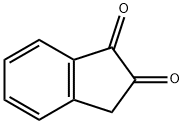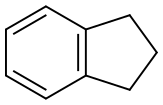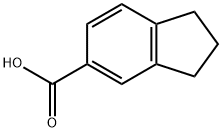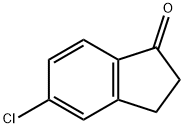Indan-1,2-dione , 97% , 16214-27-0
Synonym(s):
1H-Indene-1,2(3H)-dione
CAS NO.:16214-27-0
Empirical Formula: C9H6O2
Molecular Weight: 146.14
MDL number: MFCD00463378
EINECS: 210-109-7
| Pack Size | Price | Stock | Quantity |
| 1G | RMB199.20 | In Stock |
|
| 5G | RMB725.60 | In Stock |
|
| 25g | RMB2879.20 | In Stock |
|
| others | Enquire |
PRODUCT Properties
| Melting point: | 117-124°C |
| Boiling point: | 62-66 °C(Press: 0.1 Torr) |
| Density | 1.310±0.06 g/cm3(Predicted) |
| storage temp. | Sealed in dry,Room Temperature |
| form | powder to crystal |
| color | White to Yellow to Green |
| λmax | 484nm(lit.) |
| InChI | InChI=1S/C9H6O2/c10-8-5-6-3-1-2-4-7(6)9(8)11/h1-4H,5H2 |
| InChIKey | WFFZGYRTVIPBFN-UHFFFAOYSA-N |
| SMILES | C1(=O)C2=C(C=CC=C2)CC1=O |
Description and Uses
In 1958, IND (1,2-diketohydrindene) was first synthesized by Cava and co-workers. However, in 1997, Dr. Joullie’s research group from the University of Pennsylvania and Ramotowski's research group from the U.S. Secret Service recognized its use as a fingerprint reagent. 1,2-Indanedione (IND) reacts with amino acid contents of latent fingermarks (LFM). IND is an extremely sensitive amino acid reagent that develops latent fingerprints similar to D.F.O. Developed prints may be enhanced with the Zinc Chloride HFE-7100 mixture and visualized under green ALS light (~530nm) with orange or red filtration. It is a fluorescent reagent used to develop LFM on dry, porous surfaces, including thermal papers, due to its high sensitivity towards amino acids[1].
Indan-1,2-dione is a latent fingerprint reagent widely used in forensic chemistry. It can also be used to synthesize polycyclic arene and heteroarene systems containing five membered rings.
Safety
| Symbol(GHS) |   GHS05,GHS07 |
| Signal word | Danger |
| Hazard statements | H302-H315-H317-H318-H335 |
| Precautionary statements | P261-P264-P280-P301+P312-P302+P352-P305+P351+P338 |
| Hazard Codes | Xn |
| Risk Statements | 22-37/38-41-43-52/53 |
| Safety Statements | 24/25-61-36/37/39-26 |
| WGK Germany | 3 |
| HS Code | 29143990 |






